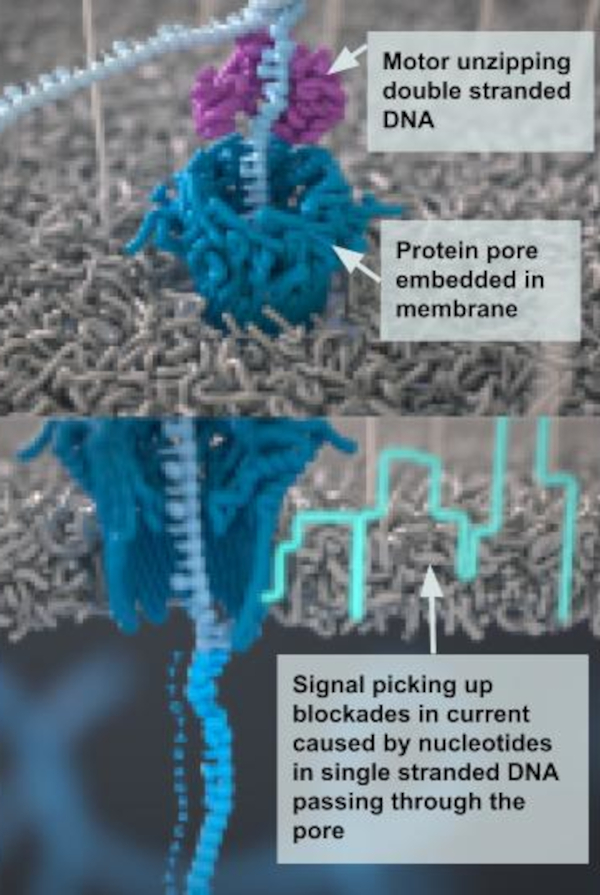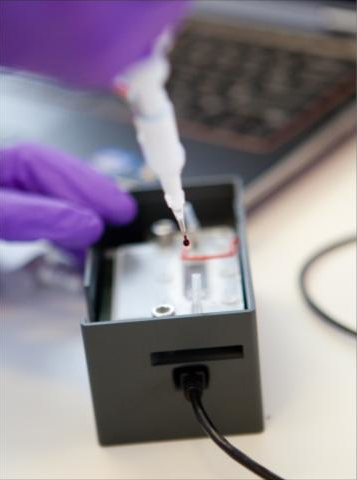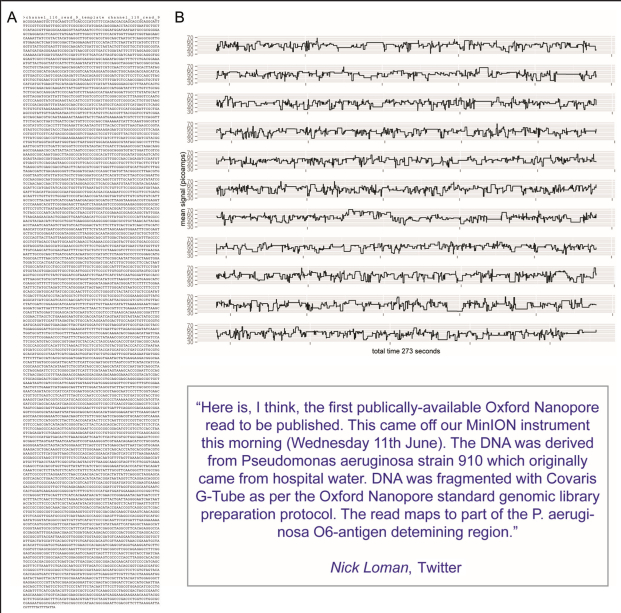
1. A quarter of the world’s total #SARS-Cov2 virus genomes have been sequenced on @nanopore devices. First sketched out as an idea here by David Deamer in 1989 this series of tweets covers the long history of nanopore sequencing. 

2. Taking 25 years to fully materialise the development of nanopore sequencing has involved close collaboration between academia and industry and many actors from different disciplines and backgrounds. Each has their own story to tell.
whatisbiotechnology.org/index.php/scie…
whatisbiotechnology.org/index.php/scie…

3. Another early pioneer of @nanopore sequencing was #HaganBayley, a British chemist who in the 1990s began working on stochastic sensing as tool to detect metal ions to track submarines as they move through water and for other applications. 

4. Today @nanopore #sequencing is revolutionising DNA and RNA sequencing, making it possible for the process to be carried out for the first time with a hand-held device in remote areas with limited resources. 

5. The portable nanopore sequencer was the brainwave of Clive Brown @The__Taybor who was inspired Oxford Nanopore Technologies breakthrough with a membrane so strong that it could be sent through the post and even survive being flown on a rocket. 
https://twitter.com/biomedhistories/status/1369618177093668867/photo/1

6. The new membrane made it possible to dispense with the need for pumps, lasers, cameras, reagent bottles and waste bottles required by conventional DNA sequencers and to make a much cheaper and smaller instrument than anyone had conceived of before. 

7. Why is @nanopore sequencing significant? It makes it possible for anyone anywhere to carry out DNA sequencing with minimal equipment. It moves the process away from the need to send samples to centralised laboratories primarily based in high-income countries. 

8. Able to sequence DNA and RNA directly from a biological sample in real-time @nanopore #sequencing makes it possible to detect, monitor and halt transmission of emerging pathogens in hard to reach places for the first time.
9. Nanopore sequencing offers a tool to combat #AMR, helping to rapidly identify and track bacteria resistant to antibiotics, the next rising public health threat whatisbiotechnology.org/index.php/exhi…. 

10. The first bacteria strain sequenced with a portable nanopore device was P. aeruginosa, a major cause of pneumonia and septicaemia 

11. The P. aeruginosa strain was sequenced by Nick Loman @pathogenomenick in 2014 from a water sample collected to track its spread in Queen Elizabeth Hospital where it was causing secondary infections in many burns patients treated with hydrotherapy 

12. Loman’s sequence of P. aeruginosa helped to restore confidence in Oxford @Nanopore Technologies whose reputation took a major knock in 2013 after it discovered a design flaw in the microchip contained in its portable nanopore sequener.
13 Loman @pathogenomenick quickly grasped that portable nanopore devices provided a means to create a ‘lab in a suitcase’. First tried out in Guinea with the #Ebolavirus in 2015, Quick, Loman’s postdoc, managed to set up a genomic surveillance laboratory in just 24 hours. 

14. Next stop for the portable @nanopore sequencer was Brazil, where in 2016 Loman’s team helped to set up a mobile laboratory to detect and stop the spread of the #Zikavirus 

15. In just one month the mobile laboratory, equipped with portable nanopore devices, travelled 2,000km across NE Brazil sequencing more than 1349 samples from patients and 650 samples from mosquitoes to track the spread of the Zika virus. 

16. In 2016 the #ARTIC network was founded on the back of the success with the Ebola and Zika viruses. The network created a protocol for a real-time molecular epidemiology tool which uses @nanopore sequencing and other methods to improve knowledge about epidemics as they unfold. 

17. In Jan 2020 Oxford @Nanopore Technologies shipped out 200 portable nanopore devices to China to be used with the ARTIC protocol to help with the outbreak of #COVID19 

18. Today nanopore sequencers are being used alongside conventional DNA sequencers by @CovidGenomicsUK, led by #SharonPeacock, to track the spread of SARS-CoV-2 which was instrumental in the discovery of the #B117 variant. 

19. The revolution of @nanopore is gauged by the fact that just 10 people, led by @MadsAlbertsen85, operating 25 portable nanopore sequencers, are managing to sequence all of positive COVID-19 samples collected from hospitals and testing centres in Denmark 

20. Early development of @nanopore sequencing was spurred on by the 2001 launch of the #$1000genome initiative. The first human genome was sequenced with nanopore technology in 2018 paving the way for its use in personalised medicine. 

21. Now being used on the International Space Station, down deep mines in Wales and out in Antarctica and the Artic, @nanopore sequencing has multiple possibilities which researchers are only just beginning to grasp. 

22. A history of vision and grit, nanopore sequencing offers a very different future for combating infectious diseases and many more applications.
• • •
Missing some Tweet in this thread? You can try to
force a refresh








